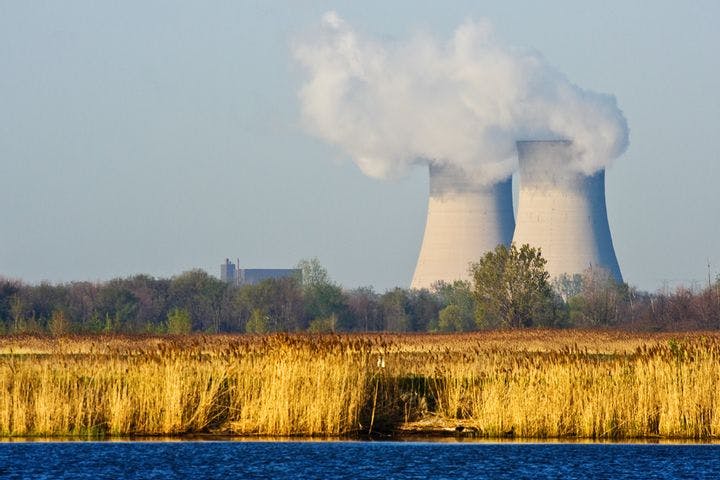Winter 2010
Nuclear Power Goes Global
– The Wilson Quarterly
Although 50 of the world's 196 countries have expressed interest in exploring nuclear power, it will take a much bigger surge of construction to make a dent in emissions of greenhouse gases.
The rising specter of global warming, along with expected increases in the price of oil, is reviving the fortunes of nuclear power around the world. Today’s critics are talking less about the accidents at Three Mile Island (1979) and Chernobyl (1986) than about the threat of nuclear weapons proliferation exemplified by North Korea and Iran.
Today, 30 countries operate 436 commercial nuclear reactors, producing about 16 percent of the world’s electricity with minimal emissions of greenhouse gases. Another 44 units are under construction, and, according to the World Nuclear Association, ground may be broken for an additional 70 in the next 15 years. There is also a larger and more indefinite “proposed” category. Some 50 countries have declared an interest in exploring nuclear power.
That sounds like a lot of activity, but it will take a much bigger surge of construction to make a dent in emissions of greenhouse gasses. Richard K. Lester and Robert Rosner, of MIT and the University of Chicago, respectively, report that the world would need to at least double the amount of electricity derived from nuclear power in order to eliminate just a quarter of the increase in carbon dioxide emissions expected between now and 2050.
The writers in this issue of Daedalus, which is devoted exclusively to nuclear power, are less concerned with technological problems than political ones. Lester and Rosner say there are two possible paths into a nuclear future. One is to continue the long-term trend toward standardization of everything from reactor design to training and regulatory procedures. Pioneered by France with its 58 reactors and increasingly embraced in the United States, which has 104, this strategy has produced an excellent record of safety and efficiency. But as developing countries seek nuclear power, smaller, more customized plants with more built-in passive safety features might be required.
What about the radioactive spent fuel? Reprocessing in “breeder” reactions creates byproducts needed in making weapons, but the more common and desirable method is to store the wastes. Lester and Rosner say that existing surface storage techniques can be improved, but the longer-term solution probably lies in new “deep borehole” technologies that bury the wastes far underground.
Robert H. Socolow and Alexander Glaser, both of Princeton, note that uranium must be enriched in order to produce fuel suitable for power plants, and even a small factory could be modified to make the more highly enriched form used in nuclear weapons—enough to make 25 to 50 bombs.
For the next decade, most new plants will come on line in countries that already have nuclear power. But the list of longer-term aspirants includes many countries that are relatively poor, unstable, and undemocratic, ranging from Indonesia to Algeria, Kazakhstan, Haiti, and Belarus. Some are plagued by high levels of terrorism, including Thailand, the Philippines, and Sri Lanka. This raises concerns about safety as well as proliferation, note Steven E. Miller of Harvard and Scott D. Sagan of Stanford, and makes it imperative to think carefully about prevention. Strengthening the Nuclear Non-Proliferation Treaty is one obvious path, but without movement toward complete nuclear disarmament, a goal of the treaty, such revision would be futile, they believe. The incentives for nuclear power nations to become nuclear weapons nations would be too great.
Socolow and Glaser advance a detailed agenda for controlling proliferation as nuclear power expands, including multinational control of the fuel process, from enrichment through disposal, and an end to reprocessing. But they warn that panic over global warming could lead to bad decisions about nuclear power. Until a solid nonproliferation scheme is in place, they conclude, it will be riskier to expand nuclear power than to endure the increase in global warming it might prevent.
* * *
The Source: "The Growth of Nuclear Power: Drivers and Constraints" by Richard K. Lester and Robert Rosner, "Balancing Risks: Nuclear Energy and Climate Change" by Robert H. Socolow and Alexander Glaser, and "Nuclear Power Without Nuclear Proliferation?" by Steven E. Miller and Scott D. Sagan, in Daedalus, Fall 2009.
Photo courtesy of Flickr/James Marvin Phelps
